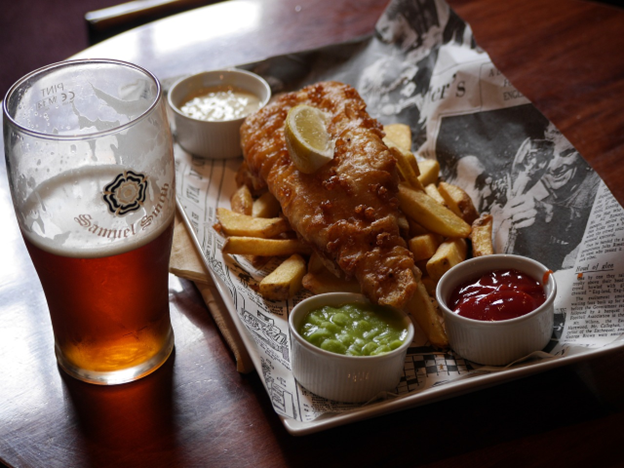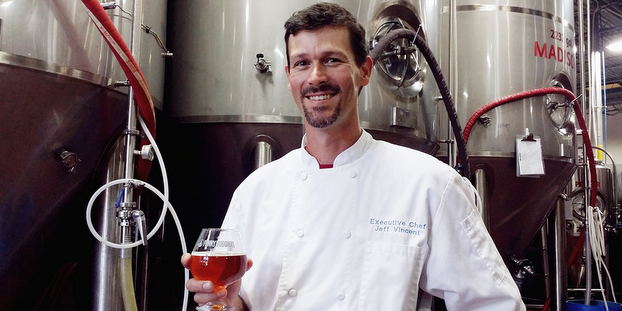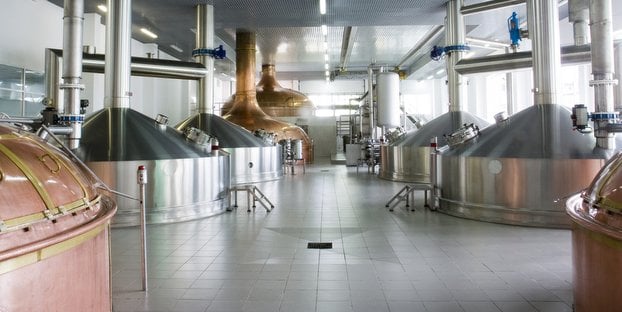
A craft brewery is a sizable investment. Since there is both a brewery component and a food component in brewpubs, the brewmaster and restaurant manager must work together for the single function of serving the customer.
However, these two key leaders also have to collaborate to keep costs down and profits up in breweries. In this guide, we’re cooking up seven big ideas to help today’s brewpub bosses bolster their budgets.
1. Maintain your kitchen and brewing equipment
While it might take time to see the impacts of maintenance on your budget, keeping your brewing and commercial restaurant equipment operational is key to avoiding substantial replacement costs.
Incorporate maintenance costs like cleaning, technician tune-ups, and servicing into your brewpub’s budget. Follow the manufacturer’s instructions for maintenance — you can even chat with your product representative for tips on keeping your equipment running smoothly.
Equipment failures can have disastrous consequences for your budget, but you can avoid them with strict adherence to your maintenance schedule.
2. Encourage collaboration between brewmasters and restaurant managers
With the brewing portion of the operation being far more expensive than food production in many cases, it is easy for the brewmaster to take a more dominant role in cost management. A better approach would be for the brewpub’s two managers (the brewmaster and the restaurant manager) to work together cohesively to improve the customer’s restaurant experience.
This can be more difficult than it sounds. While both are well trained, their work is different — they have different skill sets and different cost priorities. The marriage between the two is very important and takes time to develop.
When the two managers can work together, a brewpub can be an exciting and rewarding place to work; but, like any business, the managers need to come together to make the experience work for the customer and prioritize efficient spending.
3. Extend beer quality assurance to restaurant managers
After beer is brewed, it is stored in large coolers to hold until it is served to the customer. Given that there are several employees in a brewpub and that they make mistakes at times, the restaurant manager is in the best position to judge the quality of the product at the time it is served. The food manager can then relay this information to the appropriate people in charge.
While it might seem like the brewmaster should be the last line of defense, restaurant managers are more involved in customer service than the brewmaster in most cases
There should be a commitment to remove any product from the brewpub that is stale, flat, or not appetizing to the customer — because customer satisfaction and cost-saving go hand-in-hand.
4. Use seasonal ingredients for brewing and dishes
Ingredients that are in season are fresher and tastier — they’re also, in many cases, cheaper than out-of-season products. Incorporating seasonal ingredients in both menu creation and brewing can help brewpubs save on all-important material costs. But, it can also decrease your brand’s overall footprint and support sustainability, an effort that could save you money on logistics in the long run.
5. Analyze spending regularly
If your brewery is in its early stages, frequent cost analysis is a must. While more established businesses might only take a closer look at their balance sheets monthly or quarterly, you might need to take a more hands-on approach in your brewpub’s infancy.
If you’re looking to cut costs, consider the following areas:
- Can and bottle labeling
- Utilities and energy use
- Marketing efforts
- Ingredient cost
The last item is particularly easy to modify if you need to cut costs. If your budget is tight, consider making lower-cost dishes and slowly expanding your menu as you pad your accounts with early sales.
6. Invest in cross-training
Staff training can be costly — but turnover is even costlier. For brewpubs (and restaurants in general), retention is key to keeping overhead costs in check.
Consider investing in cross-training to increase each employee’s value to your operations. When brewers can double as servers and servers know how to complete simple brewing tasks, breweries achieve highly-coveted redundancy.
Redundancy can help cut your employment costs and manage overhead expenses on your journey to profitability.
7. Involve brewers and restaurant managers in marketing
Marketing can be an expensive undertaking, but it’s key to getting the word out about your brewery. One way to increase ROI, keep your marketing content aligned with your brand, and communicate genuinely with prospective customers is to involve both restaurant managers and brewers in the marketing process.
Your two most important operational leaders are your boots on the ground — they hear what customers love about your brewery and build relationships with patrons. They’re a vital resource when it comes to understanding your target audience.
Whether you invest heavily in marketing or keep your advertising scale small for now, your brewmaster and restaurant manager are resources that can help you increase the effectiveness of your campaign.
Keeping costs down in a brewery can be challenging, especially for brewpubs in the start-up stage. By employing a multifaceted approach to cost management (one that leverages restaurant managers’ and brewmasters’ expertise), breweries can keep their spending in check and take a faster route to profitability.
William Powell is a writer and educator with a passion for marketing. He enjoys learning about the latest business trends and analyzing how global events impact domestic and international economies.





Leave a Reply
You must be logged in to post a comment.